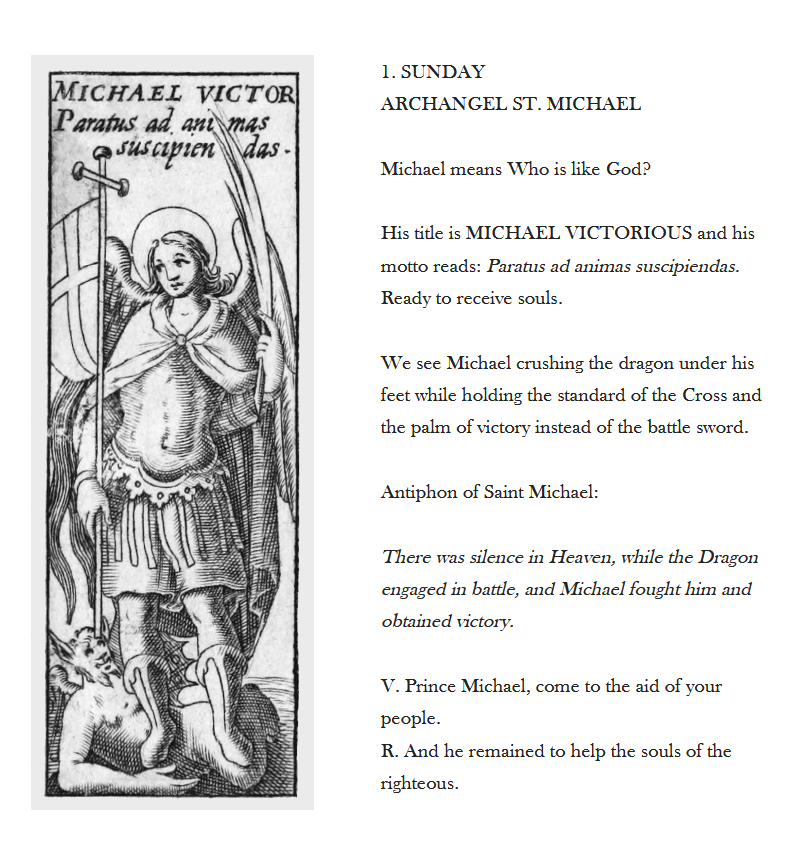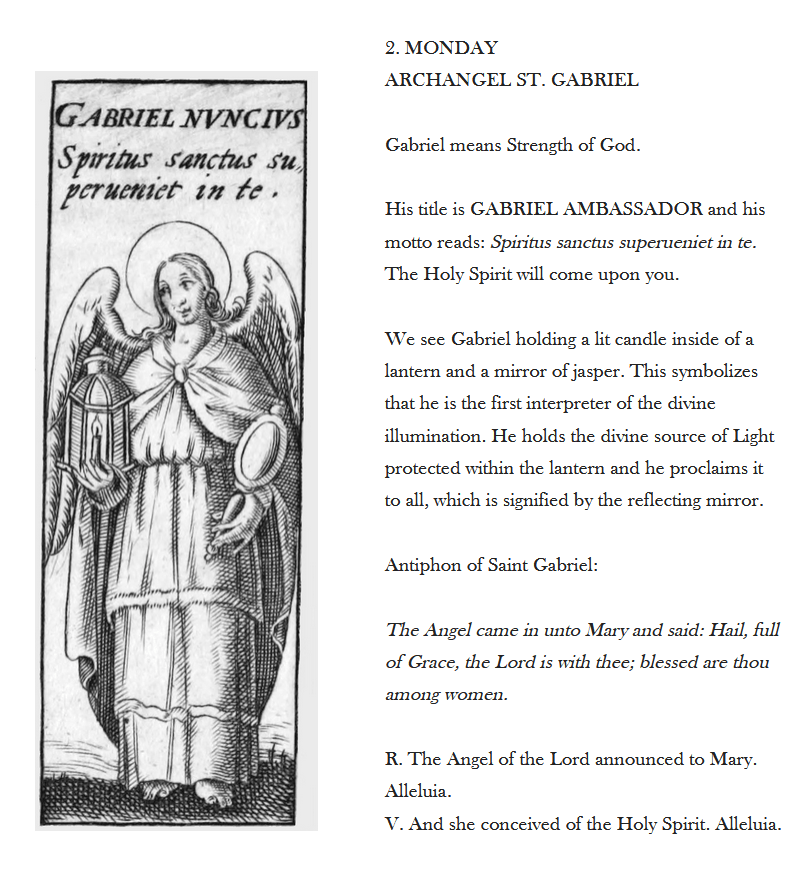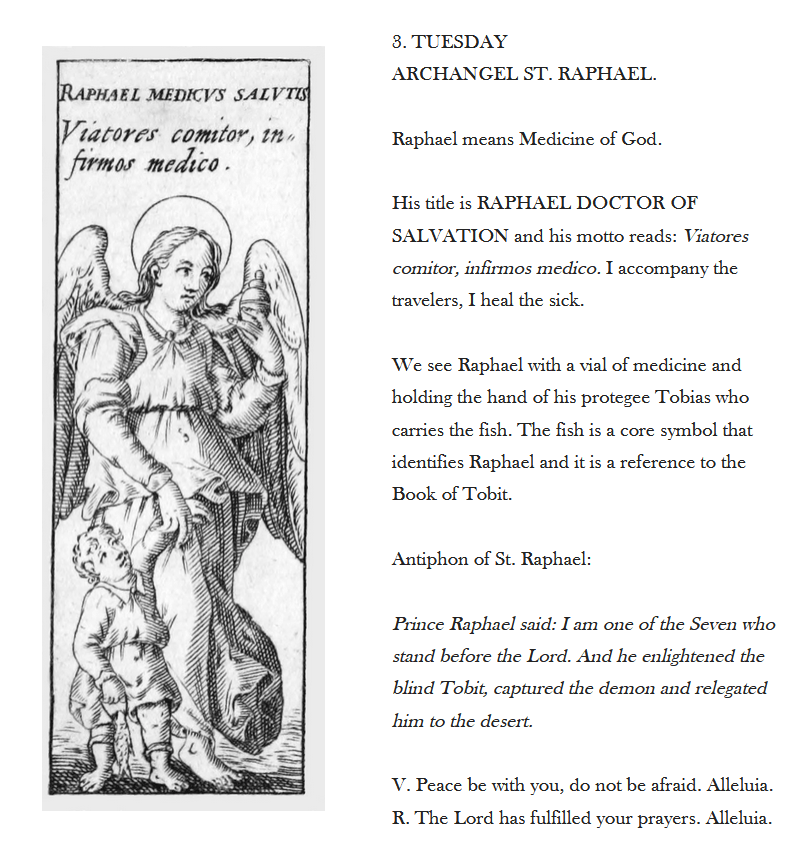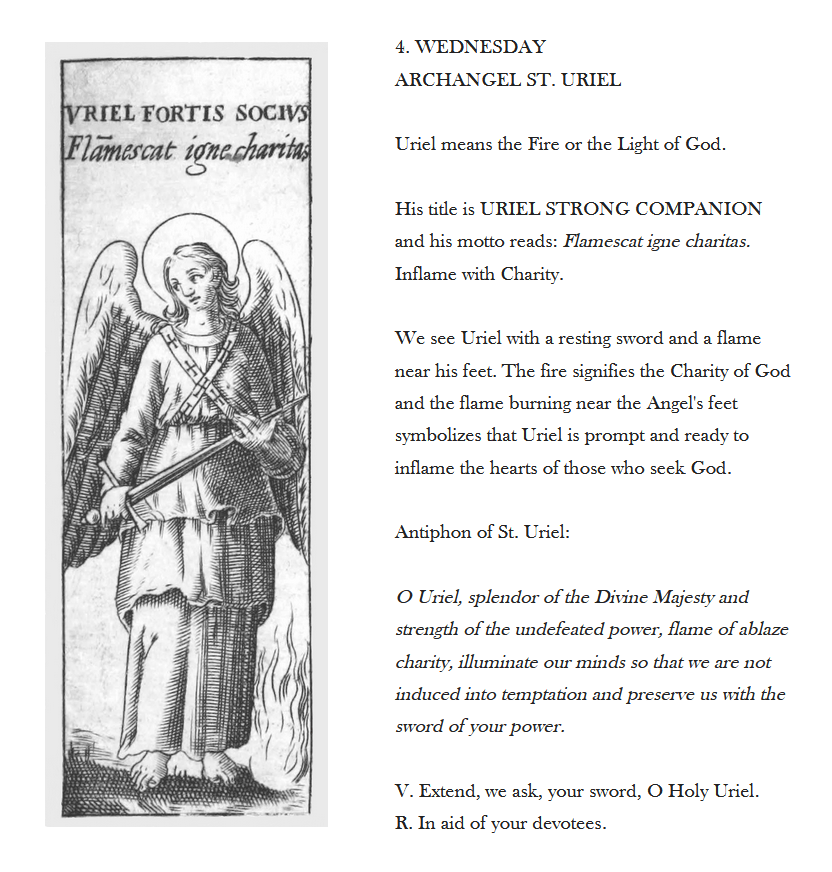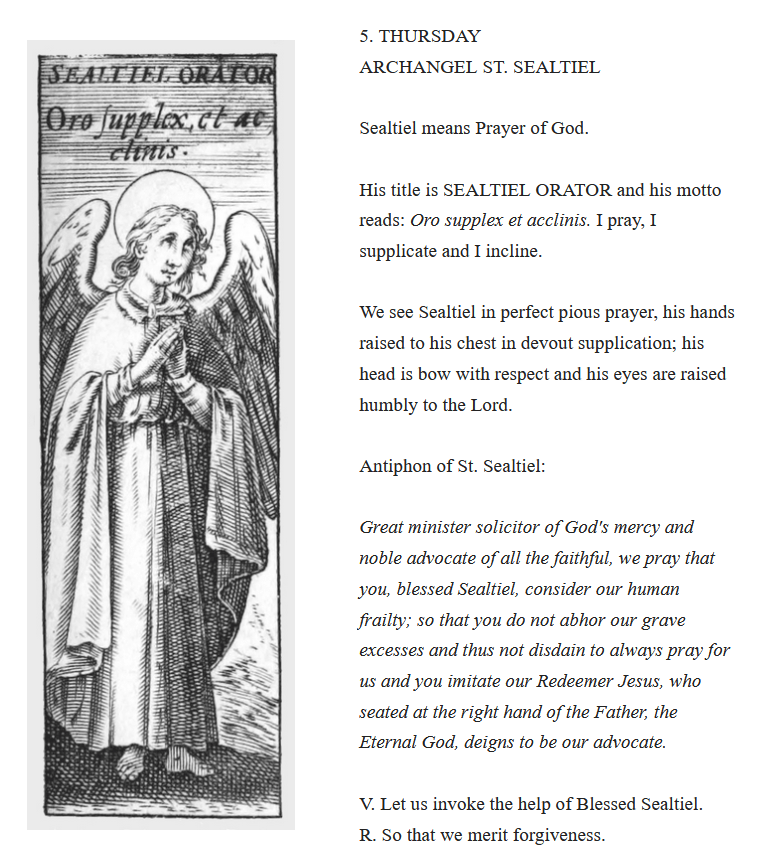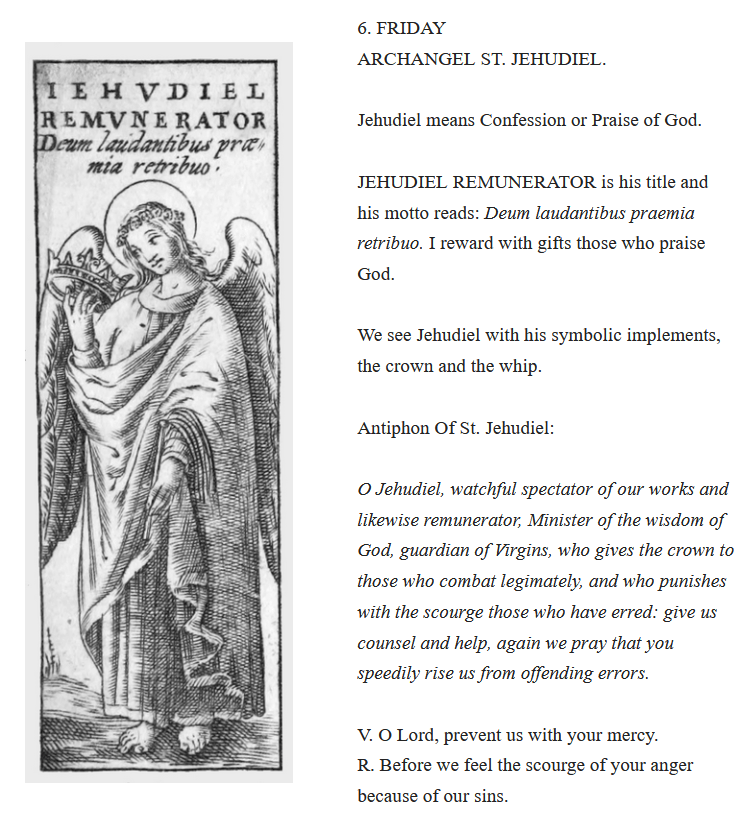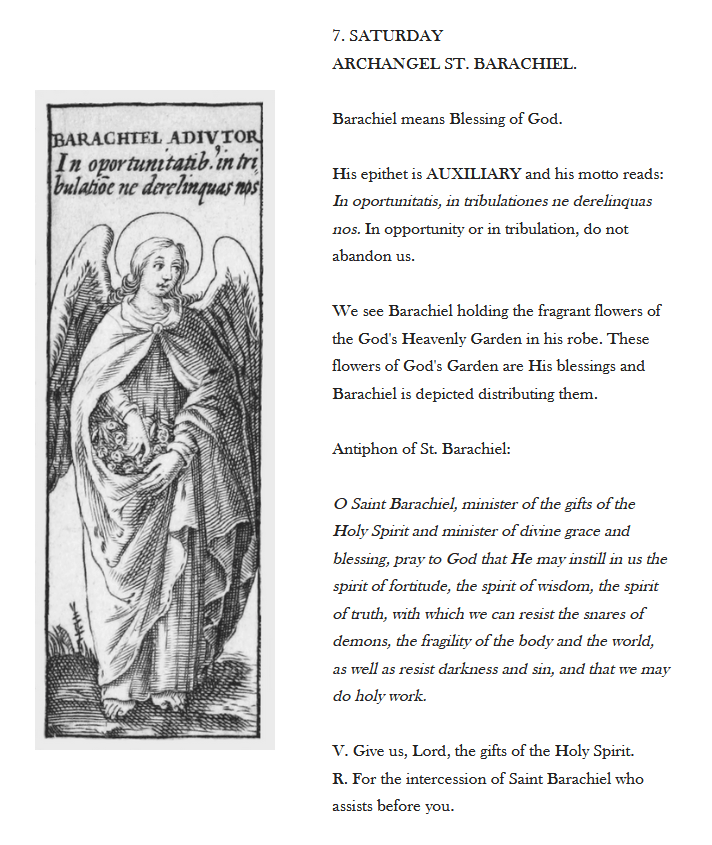The Path of The Mystic
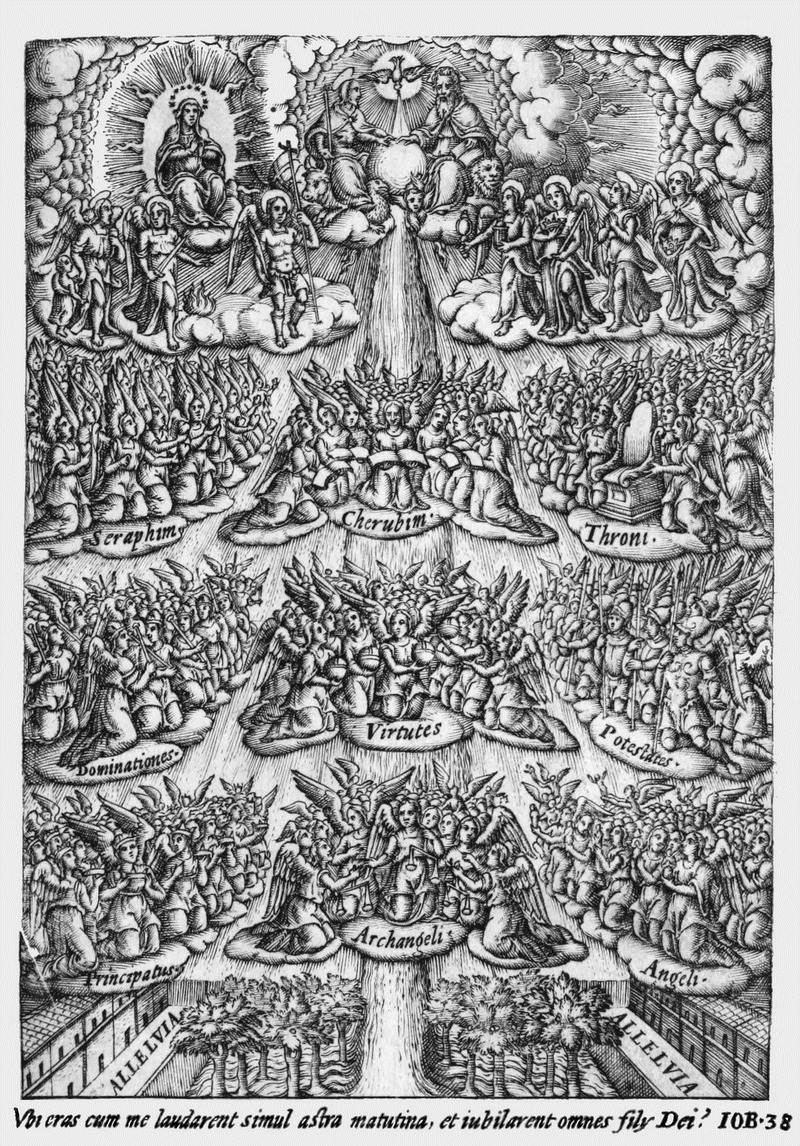
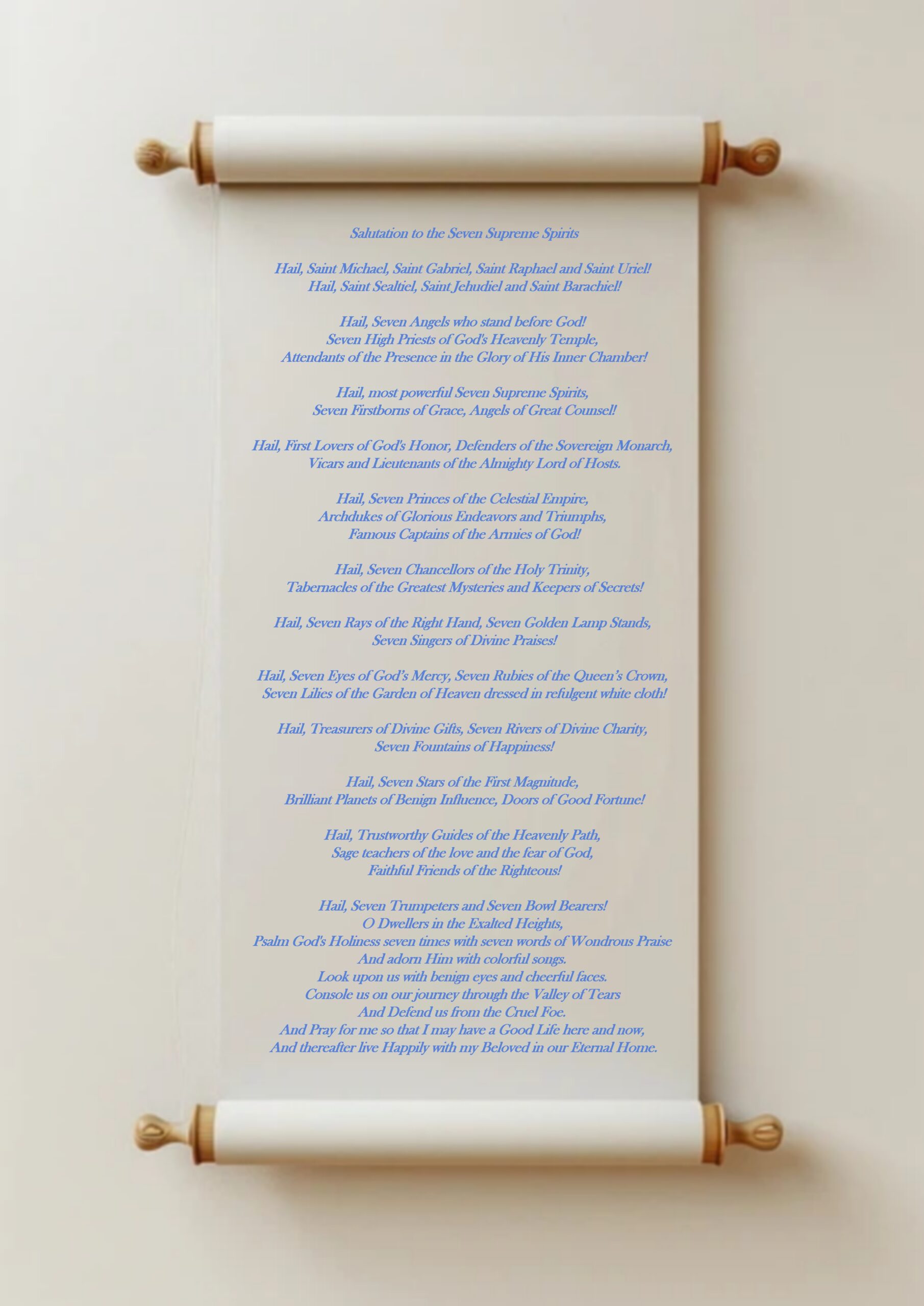
The Path of the Mystic-The 7 Apocalyptic Princes
The official censure of all Angels’ names, except for the triad Michael, Gabriel and Raphael, began in the year 745 at the second synod of Rome with Pope Zachary presiding over the trial of charismatic Aldebert in absentia.
Then, in 1460, Archangel St. Gabriel appeared in eight raptures to Blessed Amadeus of Portugal, an authentic mystic of impeccable character, a man beyond reproach and of proven sound mind, not to be dismissed easily as a “lunatic” nor labeled heretic. During these visitations, Archangel St. Gabriel shone new light on the Revelation of St. John the Divine and he declared the names of the Seven Apocalyptic Angels in this order: Michael, Gabriel, Raphael, Uriel, Sealtiel, Jehudiel and Barachiel.
These seven names and their order are at the core of the Septenary, an Angelic devotion that is performed for seven consecutive days starting with St. Michael on a Sunday. Each consecutive day honors with a prayer the Apocalyptic Seven as a Collective and the Prince of the Day in particular.
I pause here for a moment to remind the reader that all holy Angels are God’s messengers by nature but St. Gabriel is God’s Ambassador by excellence and he is known for being in charge of delivering the most important messages. Gabriel did not deliver to Amadeus his own message, he delivered God’s message. It is not in an Angel’s nature to desire for anything except for the Presence of God. Thus St. Gabriel would only ask to honor the 7 Apocalyptic Princes by name and to invoke them if this was God’s will and it promoted God’s mysterious plans. Blessings were promised to those who cultivate the 7 Princes devotion.
Blessed Amadeus wrote down St. Gabriel’s message in the Apocalypse Nova, the New Apocalypse. This prophetic manuscript was sent to Rome. In 1471 Pope Sixtus IV, summoned Amadeus to the Vatican as his personal confessor and counselor, a post of great spiritual responsibility and trust because the Pope recognized that Amadeus was blessed with the light from the Holy Spirit. It is to be noted that in the centuries following Amadeus other Saints and mystics claimed to have been in contact with the same 7 Angels and wrote about them. Many wonders have been attributed to the Seven Princes’ intercession and they are said to be especially effective in exorcising demons from locations and ending epidemics.
The Septenary was taught by Blessed Amadeus’s sister Saint Beatrix da Silva to my ancestress Queen Isabel of Castile and so it began to be practiced by my family.
In 1516, ancient frescoes representing seven Angels were discovered hidden behind the crumbling plaster of a primitive church in Palermo, Italy. Once the plaster was removed, the portrait of each one of the Princes appeared accompanied by his name and personal symbolic implements. These names were the same names that were revealed by St. Gabriel to Blessed Amadeus, but it is very significant that the antique murals preceded Archangel Gabriel declaration to the mystic by centuries.
The local priest, Antonio del Duca, inspired by the ancient images he had discovered, read the Apocalypse Nova, practiced the Septenary and his devotion was blessed with visions. The Angels asked him for a church to be built in Rome over the ruins of the Baths of Diocletian where many captive Christians died during its construction. From the splendorous building only remained standing seven columns. Duca inscribed on those columns the Seven Angels names as a pledge to build the basilica and he published Septem Principibus Angelorum Orationes cum ántiquis Imagibus to promote the project and raise funds. The temple in Rome was commissioned to the great Michelangelo. It was completed and consecrated to St. Mary of the Angels and the Martyrs in 1564 shortly after Duca’s death. The Jesuits published the last edition of Duca’s little book in Naples 1604. Then, Cardinal Albitius, at the service of the Inquisition, ordered that the names of the 7 Princes be erased from the Basilica’s Seven Pillars and from all the icons and an order was issue banning the publication the 7 Archangels’ names. The devotion to the Seven Princes was allowed to be practiced in private.
I translated and published The Seven Princes without requesting Imprimatur. House of Pinopar holds also the copyright for the digital restoration of the engravings. All materials are subject to the fair copyrights rules.
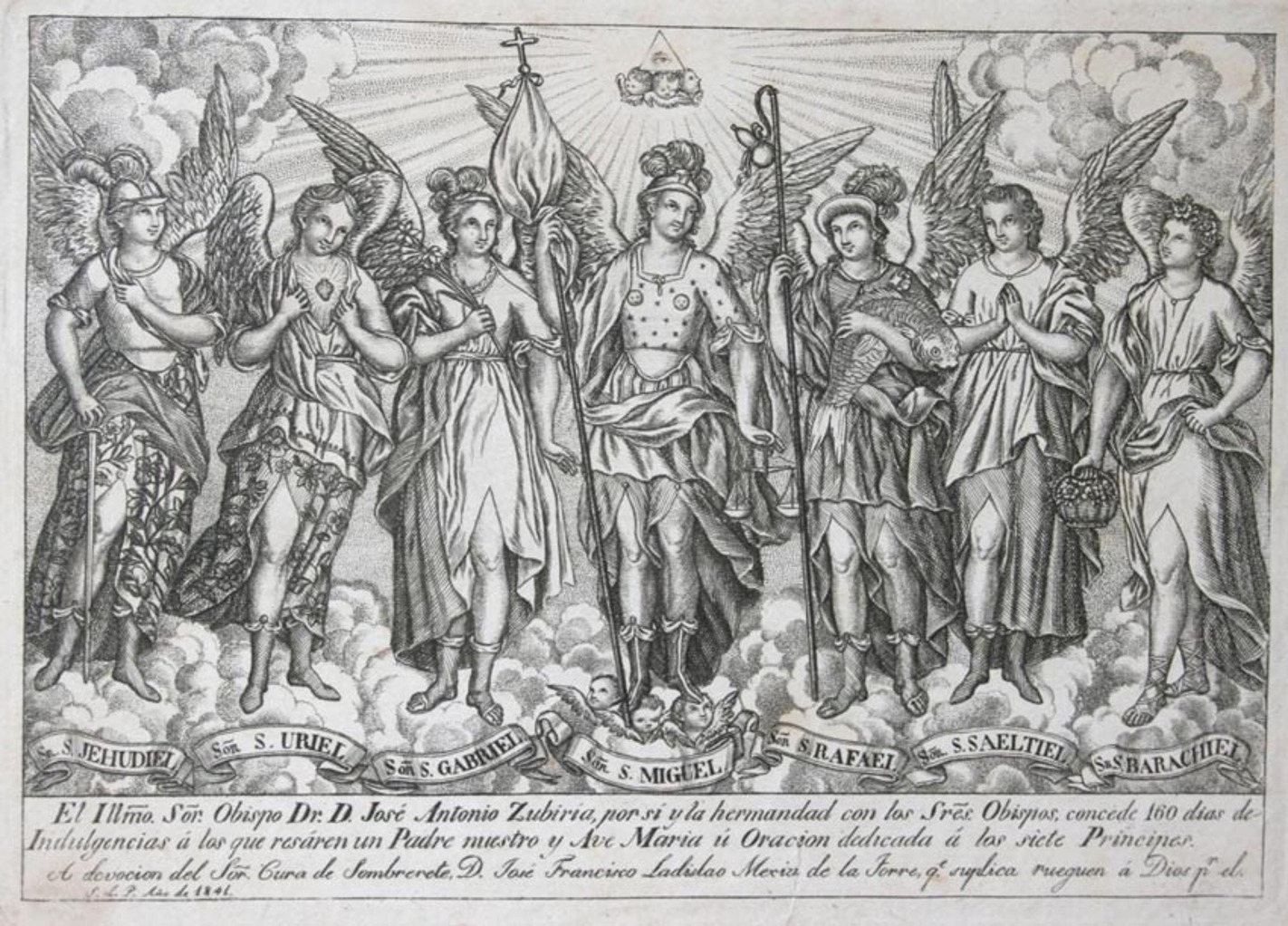
SEVEN PRINCES FLYER
This devotional flier, this flimsy old piece of paper, was intended to reach a great number of people and it gives the simplest of instructions of how to do the Seven Princes devotion. This leaflet was daring because it stood up in defiance of the Inquisition which forbade publishing the images and the names of the Seven Princes in the XVI century.
The high quality engraving would have cost a pretty penny. There exist earlier images presenting the Seven Apocalyptic Angels as warriors but here they are shown attired as celestial courtesans indicating that the war is over and the Princes are celebrating their victory over the demonic hordes. Even if on Earth the cruel battle is raging, this celebratory vision offers us, human beings, hope.
The text under the image reads
“The most illustrious Bishop Dr Jose Antonio Zubira, on his own behalf and on behalf of the brotherhood of other Bishops, grants 160 days of indulgence to those who pray one Our Father and Ave Maria or any prayer dedicated to the seven Princes. This is a devotion from the priest of the town of Sombrerete, Jose Francisco Ladislao Merca de la Torre who beseeches you to pray to God for him. AD 1841.”
Jose Merca, a Mexican mining town priest, published this flyer in 1841. And he did not stand up alone to the Inquisition’s ban because his leaflet was approved by the council of Mexican Bishops. The bishops’ further legitimized the devotion by granting 160 days of indulgence for each time that the simple instruction was followed.
The notion of creating spiritual merit to clear some of our karmic debt is common to all religions. This Seven Princes’ generation of merit takes only 32 seconds, the time to recite one Our Father & Ave Maria while contemplating the image.
Contemplation: The Seven Princes’ Symbolic Language
The Triangle and the All Seeing Eye, symbol of the Mystery of the Holy Trinity, illuminate the scene. The Trinity is enthroned by 3 Cherubs. Seven Angels stand in front of the Throne. Each one of the Angels has a different appearance and their names are written in seven scrolls.
Archangel St Michael stands in the center of the Group of Seven. This central position indicates his status as the Angels’ leader. He holds in his right hand a white banner topped by the Cross and the Orb, the symbol of Jesus everlasting kingdom on Earth. In his left hand Michael carries a scale, symbol of Judgment. Under Michael’s feet, instead of the trampled Dragon symbolizing the Angel’s victory over Evil, we see again the 3 Cherubs indicating here that the Enemy was vanished with the Power of the Throne.
To the right of St Michael:
Archangel St Gabriel holds a white lily, a symbol of the purity and perfection of Mary and an indicator of Gabriel’s top ambassador status for he was the Messenger of the Incarnation.
Archangel St. Uriel parts his garments to reveal the Flaming Heart, symbolizing his burning love for God’s Truth.
Archangel St. Jehudiel rests his left hand on the royal sash that crosses his chest, a symbol of his authority to bestow honors. On his right hand he carries a sword, symbolizing his authority to punish the wicked; he holds the sword point down in a resting position.
To the left of St Michael:
Archangel St Raphael wears a fancy travelers cloak and hat; in his right hand he carries a walking staff topped with a medicine gourd and on his left he carries a big fish, a reference to the Book of Tobit.
Archangel St. Sealtiel, holds his hands in the position of prayer, and his eyes are turn towards Heaven indicating that he is enraptured in Divine praise and praying for us, so that we may enjoy a good life.
Archangel St Barachiel holds a small basket of candid roses, a symbol of Heaven’s Garden and of God’s Blessings, blessings that Barachiel is in charge of spreading on Earth.
The Septenary.
Take a deep breath and exhale.
Rest your eyes on the Seven Princes.
Smile softly and gently scan the image.
Thank God for having placed these heavenly spirits
Of great sanctity and dignity,
At the service of man.
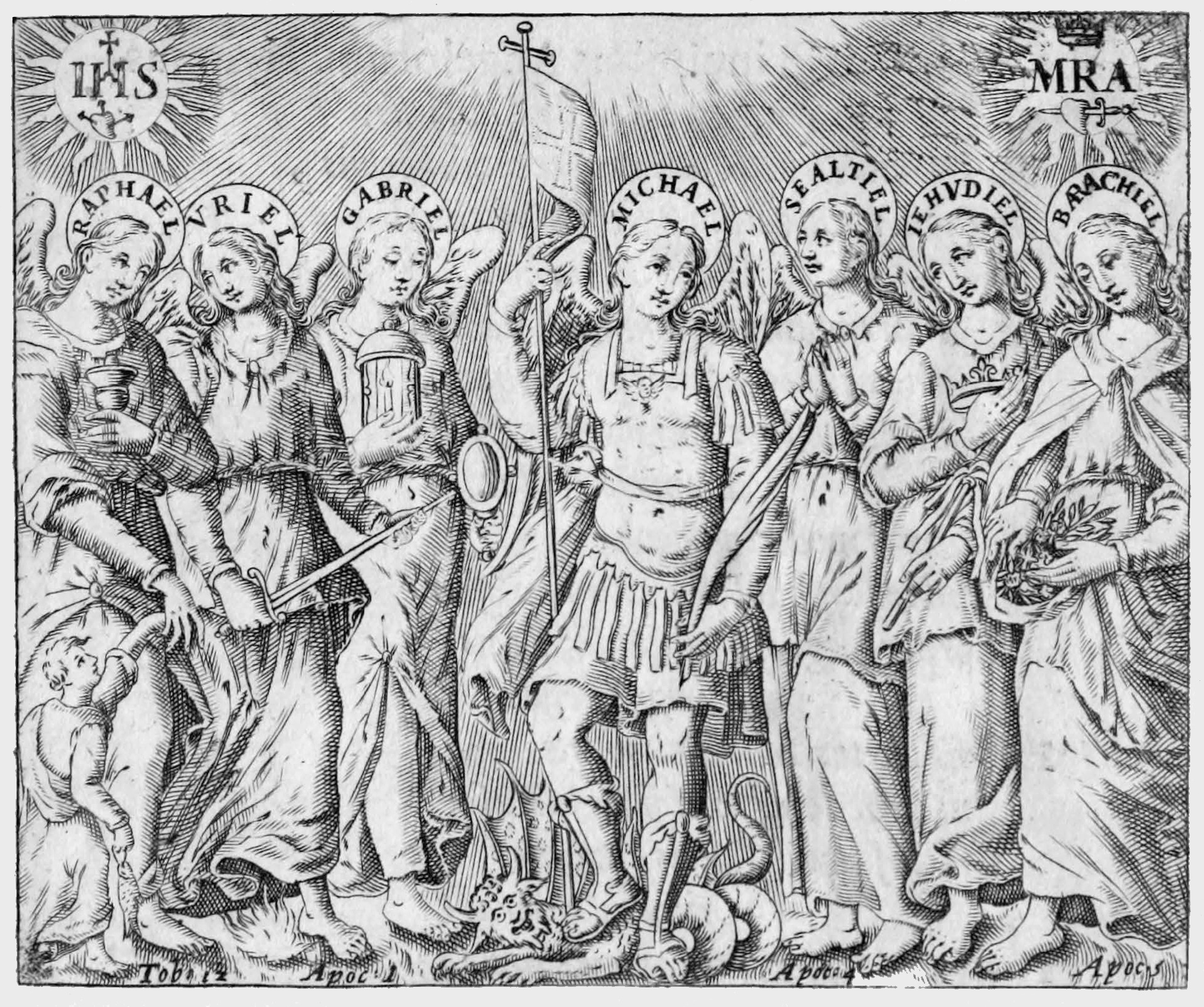
I present here an abbreviation of the Septenary printed in 1543 by Antonio del Duca in, The Seven Princes of the Angels, Prayers with Antique Images.
Starting on a Sunday, contemplate the image of the group of Seven. Recite each day an opening salutation to the Seven and follow this with the contemplation of the individual image, the Prince of the Day, and then, recite his personal antiphon.
Opening salutation:
“Adore the Lord. Alleluia.
The Princes of the Angels always stand in front of His Throne.
Adore the Lord. Alleluia.
In the sight of the Angels I will sing to Thee, O God!
Holy, Holy, Holy are you Lord of Hosts!
Mercifully grant that those whoever minister before Thee in Heaven,
May defend our lives here on earth.
Hail Micha-El, Who is like God! Hail Gabri-El, Strength of God!
Hail Rapha-El, Medicine of God! Hail Uri-El, Fire of God!
Hail Sealti-El, Prayer of God! Hail Jehudi-El, Praise of God!
Hail Barachi- El, Blessing of God!
O Seven Princes to whom God entrusted our protection,
Come to our aid and intercede for your devotees
With the Immaculate Lamb, Son of God. Amen.”

